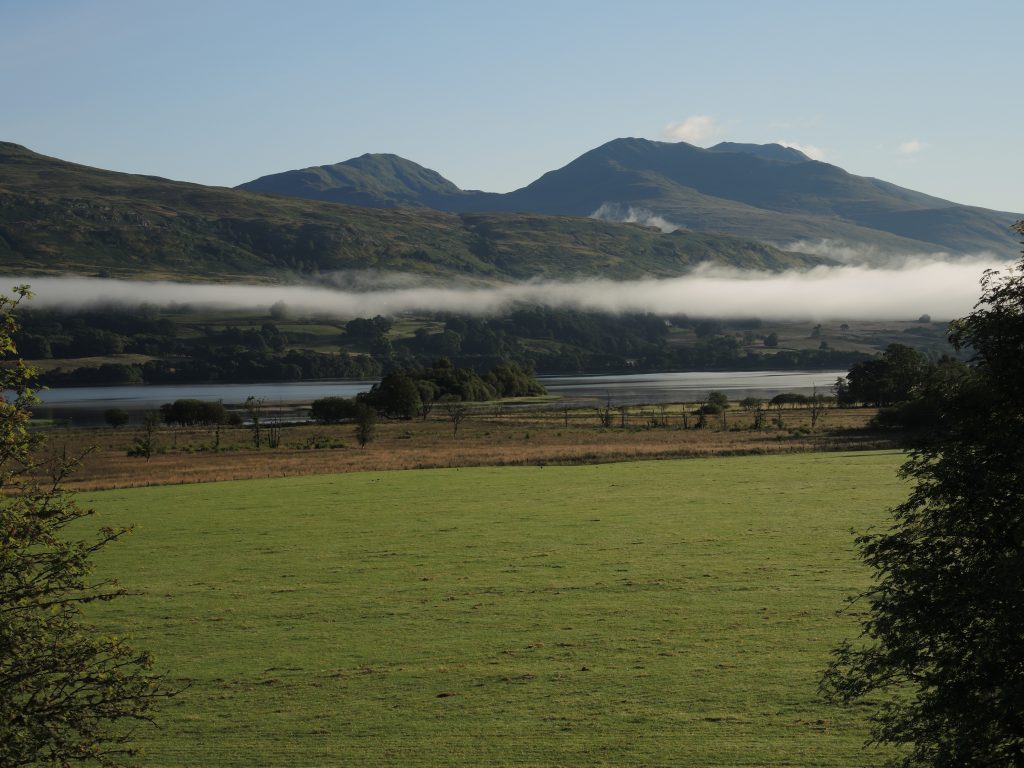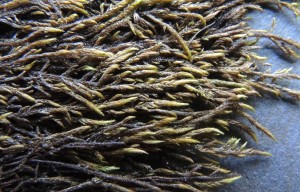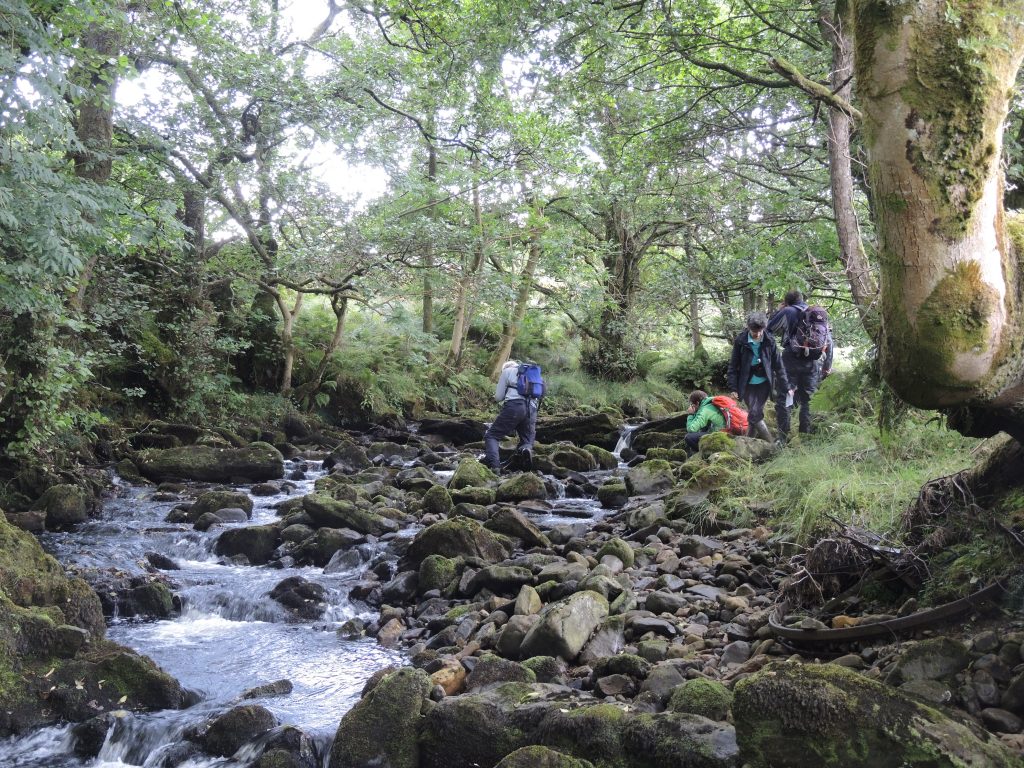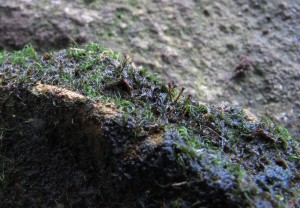Bryologists at RBGE are actively engaged in recording bryophytes (mosses, liverworts and hornworts) in Scotland, and 2014 turned out to be an eventful year, when we made two exciting and unexpected discoveries in the Perthshire Highlands and Scottish Borders. Both of these were made on field meetings run by the British Bryological Society (BBS), the first on the Killin meeting, organised by BBS President, Gordon Rothero, and the second on the Newcastleton meeting, led by David Long.
On the first day of the Killin meeting, 27 July, we split into two groups, mine on to Ben Lawers itself, concentrating on the exceptionally rich south-west crags, Creag Loisgte. We were joined by NTS Ecologist, Dan Watson. Ben Lawers is the most famous and best-explored mountain in Scotland for bryophytes, and though it had not been re-surveyed in detail since 1996 we did not expect any new discoveries. Many of our group, from Scotland, England and Ireland were new to the mountain and at almost every turn were seeing rarities new to them. While looking for a comfortable lunch spot, I pointed out some big mica-schist slabs where I had seen several rarities before, and I spotted a small creeping moss I did not recognise.
Lunch was on our minds and the moss was quickly forgotten, and eventually we ascended the Ordnance Ravine leading up to the summit area with stunning views over the Perthshire mountains and Lochan nan Cat twinkling below, before a rapid descent back to the cars. Due to other commitments my Killin mosses were not studied for two months. Microscopic examination of the specimen suggested it might be the Bent-stem Hook-moss, Cratoneuron curvicaule, an identification later confirmed by Tom Blockeel. This species was first found in Britain on Ben Lawers in 1893 by H.N. Dixon, and last collected there in 1913 by J.B. Duncan. Its only two confirmed sites were Ben Lawers and nearby Cam Chreag. It has been presumed extinct in Britain and this represents the first sighting in 101 years. Since 1913 the moss seems to have been largely forgotten, perhaps as it was thought to be doubtfully distinct from its common sister species, Fern-leaved Hook-moss Cratoneuron filicinum. However, the Swedish bryologist Lars Hedenäs in 2011 carried out a molecular study of the two species which strongly confirmed their distinctness.
The second discovery was made on a short meeting in September following the BBS annual symposium at RBGE when eight bryologists explored the Black Burn and nearby valleys near Newcastleton in Roxburghshire, in the extreme south-west of the Scottish Borders. The Black Burn is a beautiful upland valley, in the lower part fringed with ash and alder trees, further up cutting through the soft calcareous Lower Carboniferous strata in a series of rapids and cascades. In June 1948 bryologist Evelyn Lobley first explored the Black Burn for bryophytes and amongst her gatherings she later detected a few stems of a tiny moss which was a new record for the British Isles – the Water Rock-Bristle, Trochobryum carniolicum, now updated to Seligeria carniolica. She was not exactly sure where she had found it, in failing light, but thought it had been on a low limestone outcrop in a tributary stream, Rough Gill.
She returned there repeatedly but could not re-find the moss, one of the tiniest British species, though she did find it in a new site, near Rothbury in Northumberland, where it still exists. Many more visits have been made by the BBS and others to the Black Burn, confirming it as one of the best Borders’ sites for bryophytes, but the Seligeria has always eluded us, and it was thought perhaps to be extinct in Scotland. On 15 September this year we tried a new approach, following the burn up from the village of Newcastleton and exploring the lower reaches, ignored in the past. Fortunately the water level was very low, and because in the Northumbrian site the moss grows on limestone rocks close to the water, we searched the limestone outcrops and detached boulders in and close to the stream under the shade of the ash and alder trees. Remarkably, we found the moss quite quickly, on a half-submerged boulder, and soon after found some extensive patches of it, complete with fruit bodies (sporophytes) on some almost vertical limestone strata emerging from the water. Later on, even more was found further up the stream, and the following day, having really ‘got our eye in’ we found it in two more sites in another valley, the Hartsgarth Burn.
Both these discoveries confirm that even the best-studied sites can still have bryological secrets awaiting discovery by diligent searching.




